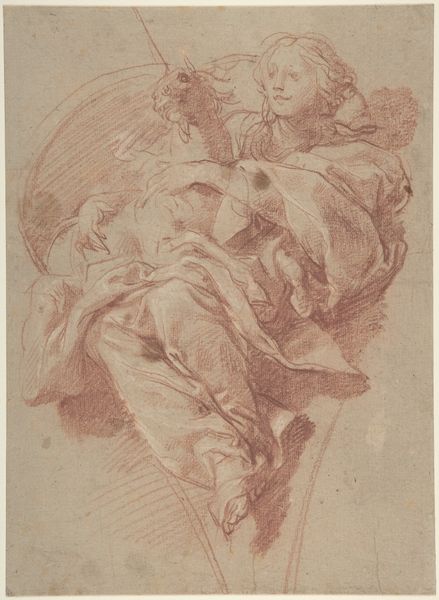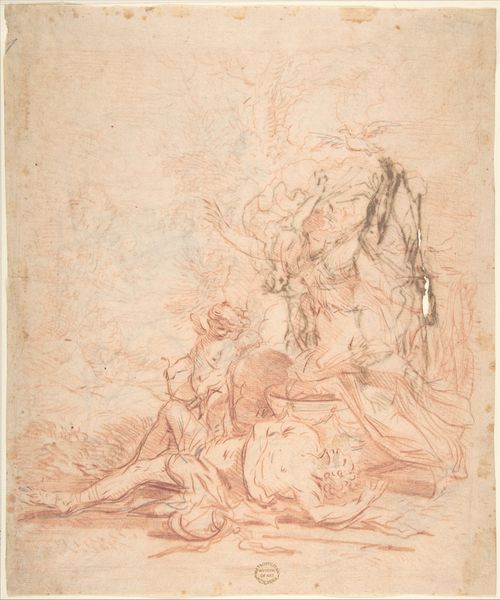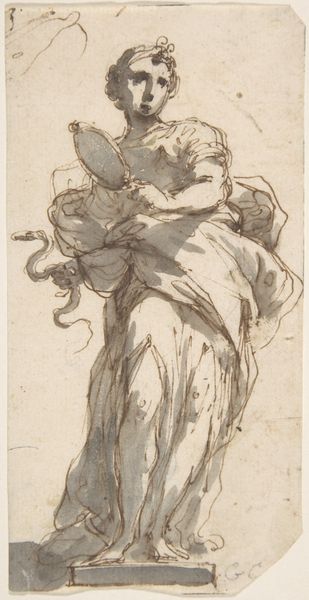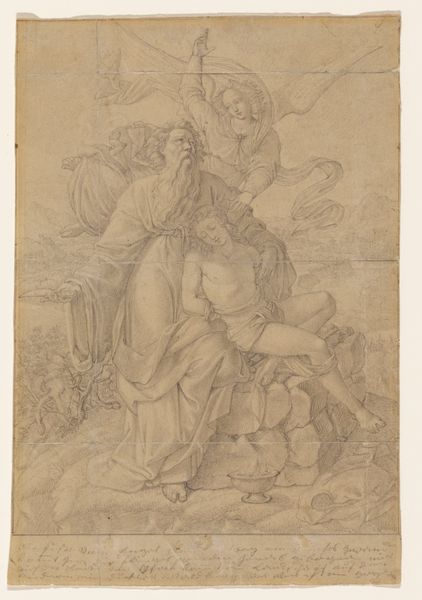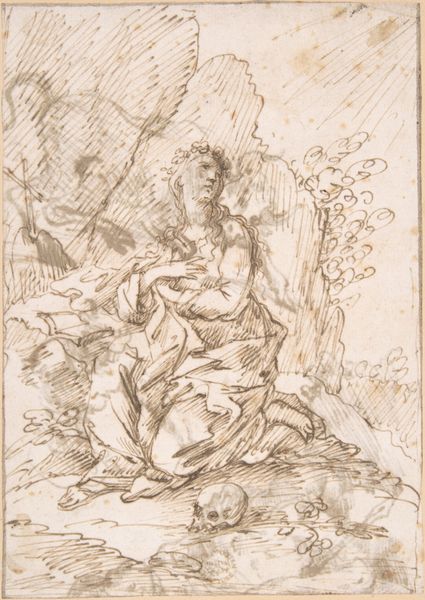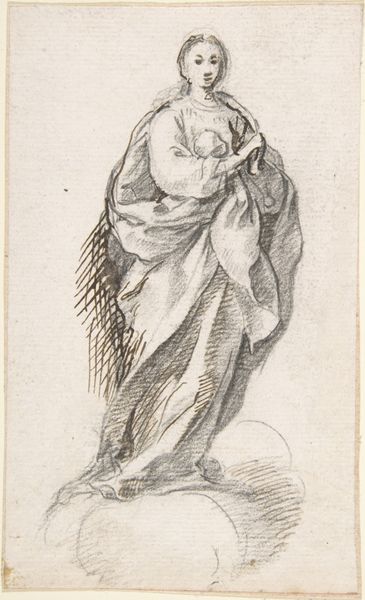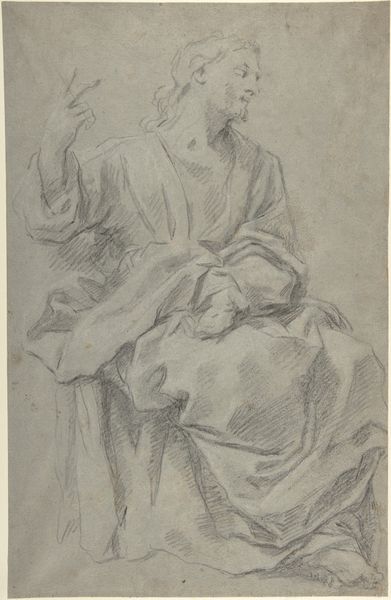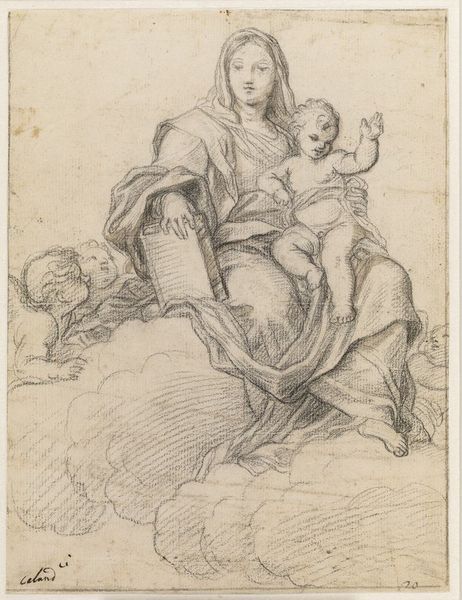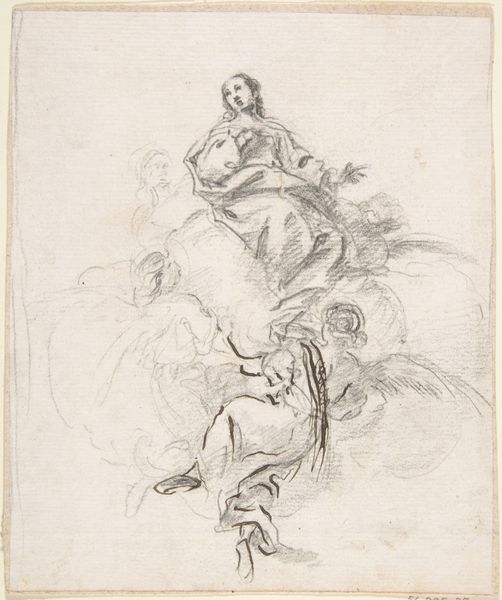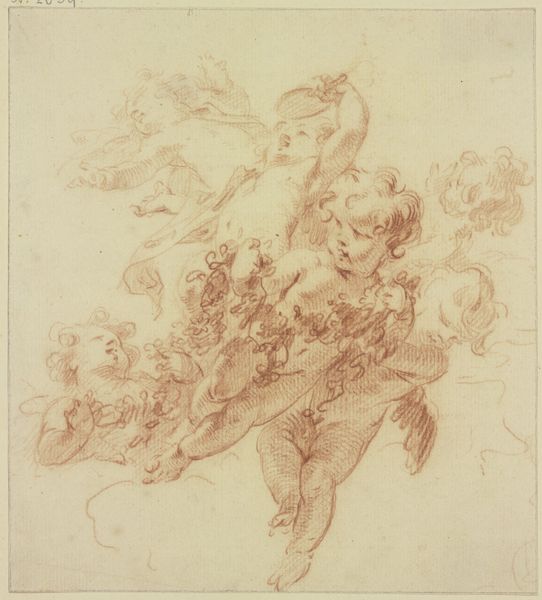
drawing, print, pencil
#
drawing
#
baroque
# print
#
figuration
#
pencil drawing
#
group-portraits
#
pencil
#
history-painting
#
academic-art
Dimensions: 14-1/2 x 9-1/2 in
Copyright: Public Domain
Editor: Here we have a pencil drawing from the 1700s called "Holy Family," located in the Metropolitan Museum of Art, and currently attributed to an anonymous artist. There's a striking softness to the scene. How do you interpret this work through a modern lens? Curator: This drawing presents a familiar religious scene, yet its very anonymity invites critical questioning. The depiction of the 'Holy Family' can be examined within the socio-political context of the 18th century. How does the artist, likely working under patriarchal structures, portray the power dynamics within this family unit? Where does agency lie, and whose stories are silenced? Editor: So you're suggesting we should look at this image less as a purely devotional object and more as a cultural artifact reflecting specific power dynamics? Curator: Precisely. Consider Mary’s demure posture, or Joseph’s positioning slightly behind her. What statements are being made, consciously or unconsciously, about gender roles and societal expectations of the time? Even the cherubic figures deserve scrutiny. Who gets to represent innocence, and to what end? Editor: That shifts my perspective quite a bit. I was focusing on the figures themselves. Curator: It's crucial to remember that representations, especially of idealized families, often serve to reinforce specific ideological frameworks. What happens when we, as viewers, challenge these frameworks and instead look for disruptions, ambiguities, or perhaps even unintended subversions of the dominant narrative? Editor: That’s a lot to consider, but it makes the artwork much more relevant to current discussions around representation. Curator: Absolutely! By interrogating historical depictions of gender, power, and identity, we gain critical tools to analyze and deconstruct contemporary narratives as well. Editor: Thanks for this conversation. It gave me a completely different appreciation for this image! Curator: My pleasure. It is important to use art history as a mirror, reflecting both the past and the present.
Comments
No comments
Be the first to comment and join the conversation on the ultimate creative platform.

